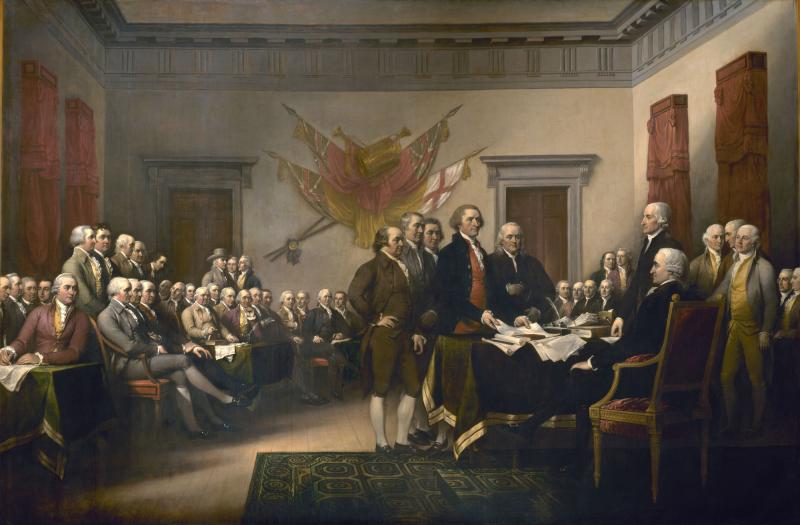Declaration of Independence
John Trumbull's famous painting, Declaration of Independence, depicts the presentation of the first draft of the Declaration of Independence to the Second Continental Congress on June 28, 1776. The painting shows the five-man drafting committee (John Adams, Roger Sherman, Robert Livingston, Thomas Jefferson, and Benjamin Franklin) presenting their work to the Congress. Seated is the President of Congress, John Hancock. The original painting, measuring 12 by 18 feet, hangs in the rotunda of the U.S. Capitol building in Washington, D.C.

Trumbull, John. Declaration of Independence, 1818, oil on canvas, Washington, D.C., U.S. Capitol.
Public Domain
Public Domain is a copyright term that is often used when talking about copyright for creative works. Under U.S. copyright law, individual items that are in the public domain are items that are no longer protected by copyright law. This means that you do not need to request permission to re-use, re-publish or even change a copy of the item. Items enter the public domain under U.S. copyright law for a number of reasons: the original copyright may have expired; the item was created by the U.S. Federal Government or other governmental entity that views the things it creates as in the public domain; the work was never protected by copyright for some other reason related to how it was produced (for example, it was a speech that wasn't written down or recorded); or the work doesn't have enough originality to make it eligible for copyright protection.